Kolkata Painter’s Reinvention of Centuries-Old Patachitra Art Will Wow You!
“For far too long in Indian art, women have been depicted as goddesses or subordinates. In my artwork, I try to portray women as I see them around me," says the last of Kolkata's Patua painters.

The world of Bhaskar Chitrakar is a curious one, filled with characters of wonder, that find inspiration and magic in the mundane. From household chores, public transport to marital relationships, his work is a commentary on a common man’s life, more precisely, the life of a common Bengali Babu and Bibi.
But, that is an aspect borrowed from the century-old folk art that originated in the urban setting of Calcutta.
Instead, it is his approach that sets the work apart.
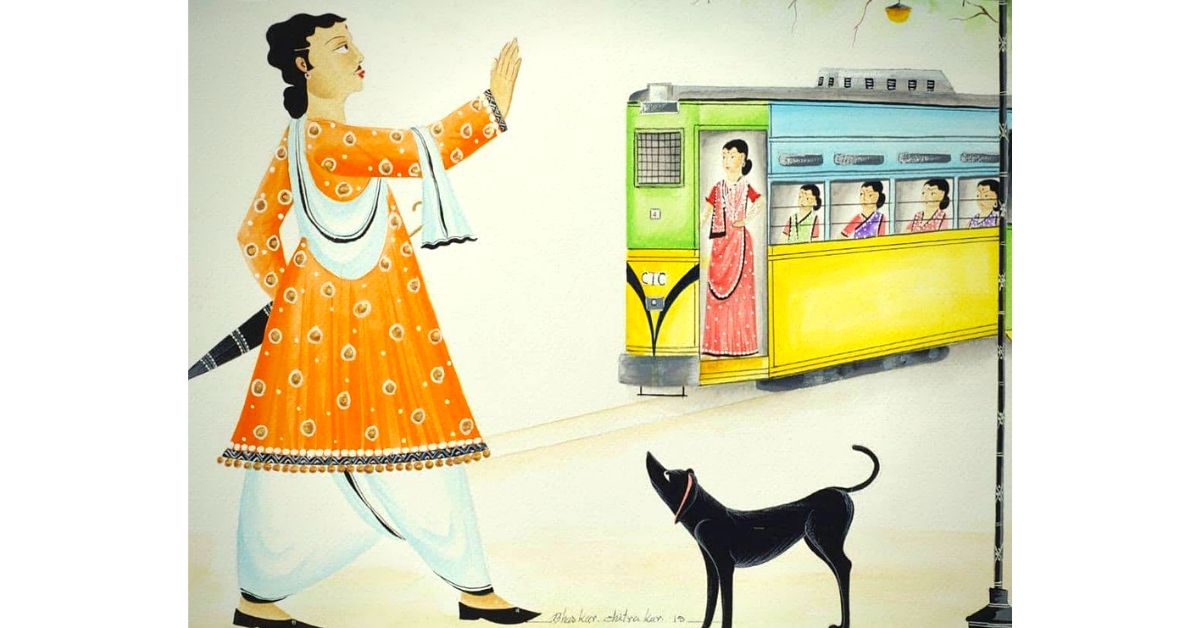
Plucked from the unique 19th-century art of Kalighat Patachitra, his work is a modern tribute to six generations of artists in the family, who poured themselves to flick the brush and paint history.
Started by the patuas of Kalighat temple, this Patachitra, unlike other folk arts, did not emerge in the rural parts of India, inspired by the simple life. With a spoonful of vices, it depicts the flawed and illicit lives of urban dwellers; the simple joys wrapped in semi-expensive carpets, all in the pursuit of maintaining a lifestyle of the emerging population of the Indian middle class.
Also Read: Kumortuli: Straw, Tamarind & 130-YO Tradition Brings These Kolkata Statues to Life
For centuries now, the patachitra has been a medium of satire or social commentary, where the Bengali urban-middle class is portrayed in detail under a myriad of shades. However, the raw record also comes with its own set of biases, some that Bhaskar has targeted and countered in his interpretation.
One such aspect is women empowerment.
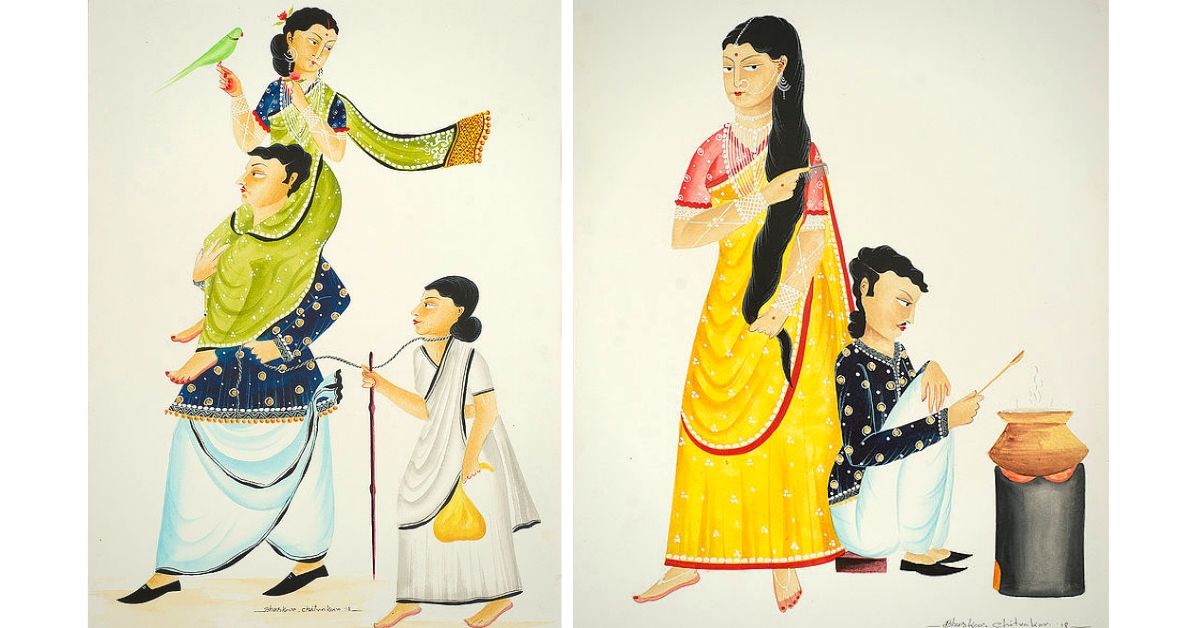
Contrary to many patas which either depicted women as goddesses or subordinates while being critical of women’s education, and often painted strong women with a tinge of villainy, Bhaskar’s women are unapologetic, fierce, beautiful, and real.
“For far too long in Indian art, women have been depicted as goddesses or subordinates. In my artwork, I try to portray them as I see them around me. While growing up in Kolkata, I noticed these signs on the bus that said ‘Ladies First’, and the conductor would even scream this when passengers were getting on or off the bus. I guess this stayed with me. In my art, and even in my family, I always put women first,” he says.
His Kali-Kahlo series, inspired by the Mexican artist Frida Kahlo, is one among the many colourful representations of women, beyond common gender stereotypes.
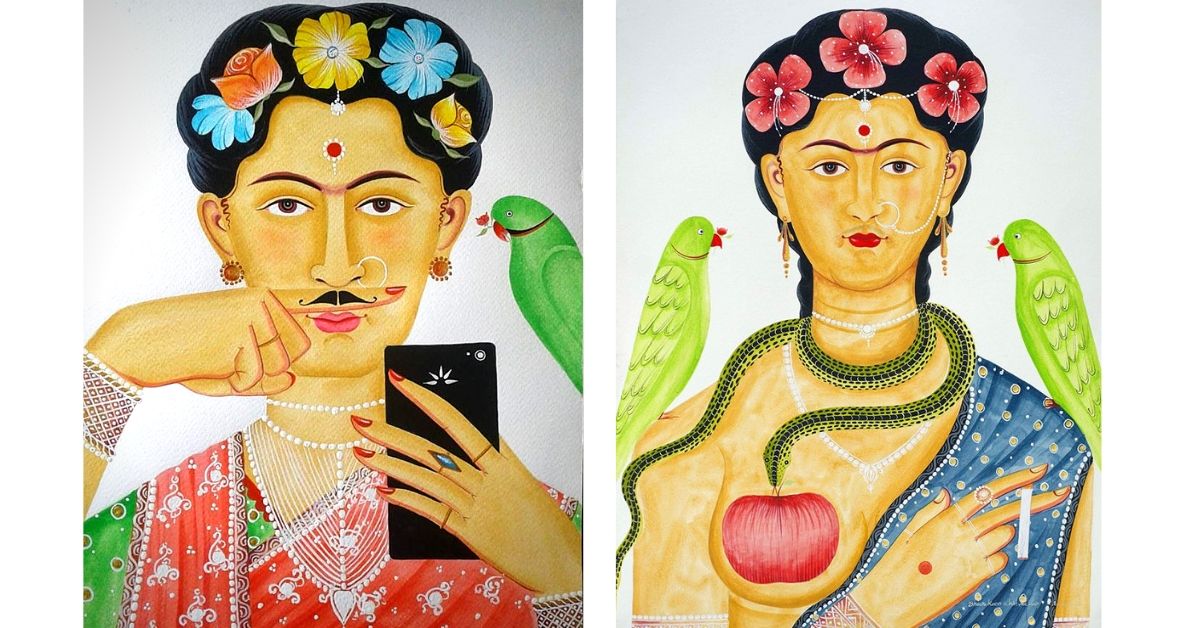
Bhaskar also juggles with a prominent pata theme—a henpecked and subdued babu prioritising his wife over his bent and pitiable mother. However, this is one of the many contrasts of relationships he presents in his art.
With the critique of an unequal marital relationship, he also presents a positive alternative of egalitarianism—with altered gender roles and lovely frames where both the Babu and Bibi are equals, and relish the joy of love.
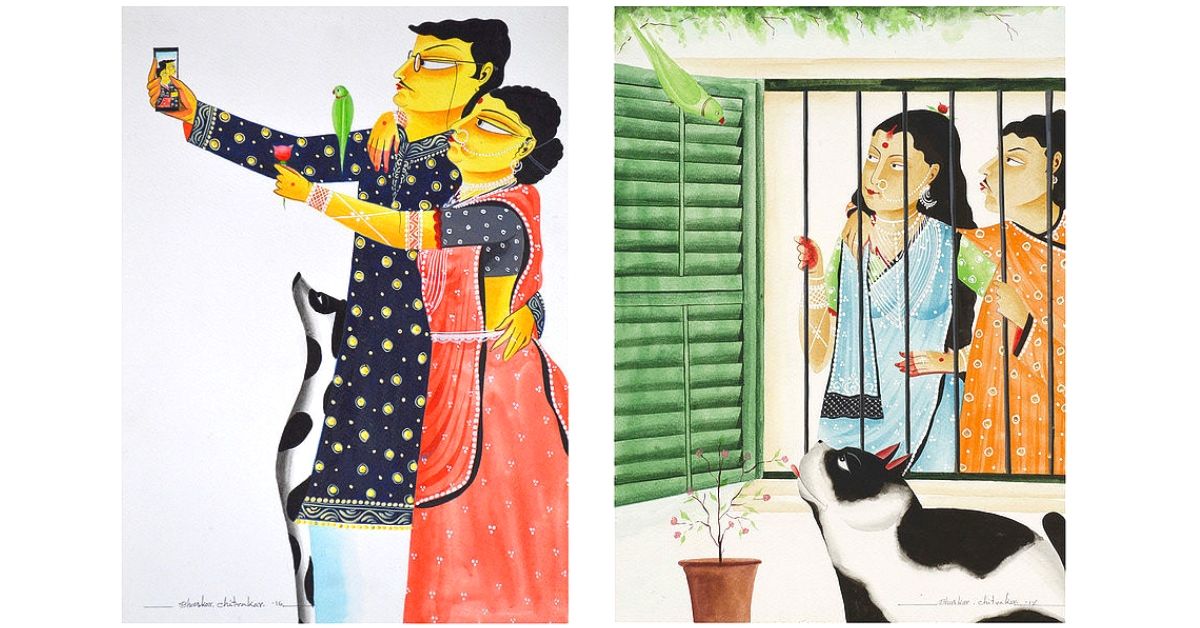
With the tides of time, Calcutta has changed to Kolkata, and so has Kalighat and its patuas. Unlike the olden days, when Bhaskar’s ancestors could openly use art to mock their superiors without incurring consequences, today, the patuas have to tread carefully.
Yet, the last of his lineage and one of the few surviving patuas, Bhaskar continues to make strides to keep the fire burning without compromising on quality.
And, owing to his efforts, the Babus and Bibis of his paintings are now travelling the world wide web and the globe, charming scores of people with a tinge of satirical mirth!
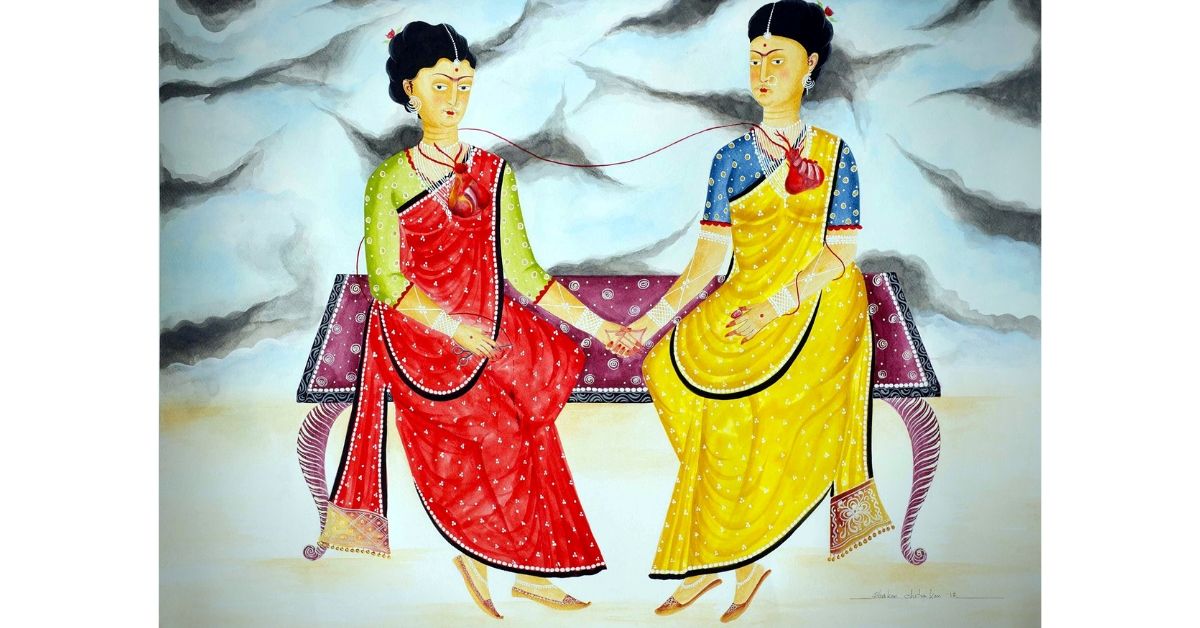

(Edited by Shruti Singhal)
Like this story? Or have something to share?
Write to us: [email protected]
Connect with us on Facebook and Twitter

Similar Story

Kyani to Nirula’s: Artist Takes India Down Memory Lane with Sketches of Iconic Eateries
Aditya Raj from Jaipur visited an exhibition during his law school days and decided he would be an artist. Here’s his visual representation of a nostalgia trip with pictures of the most iconic eateries in India.
Read more >
If you found our stories insightful, informative, or even just enjoyable, we invite you to consider making a voluntary payment to support the work we do at The Better India. Your contribution helps us continue producing quality content that educates, inspires, and drives positive change.
Choose one of the payment options below for your contribution-
By paying for the stories you value, you directly contribute to sustaining our efforts focused on making a difference in the world. Together, let's ensure that impactful stories continue to be told and shared, enriching lives and communities alike.
Thank you for your support. Here are some frequently asked questions you might find helpful to know why you are contributing?


This story made me
-
97
-
121
-
89
-
167












